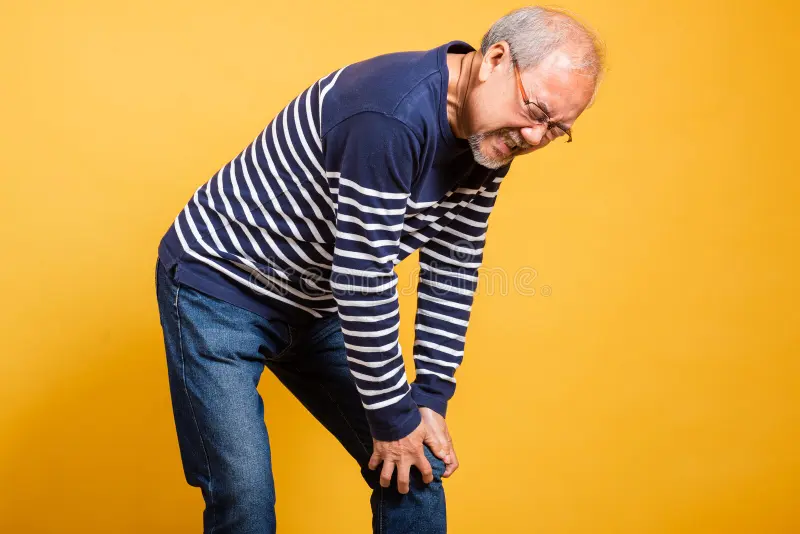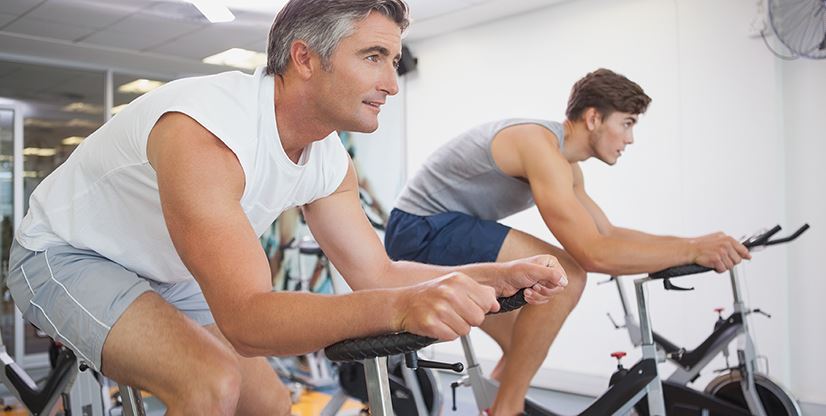So you’ve hit the big 5-0, and along with the milestone comes a few unwelcome guests, specifically joint pain. It’s a common issue for men entering this new chapter of life. This isn’t just about wear and tear; it’s also about understanding the complex changes your body is going through.
Joint pain can stem from a variety of reasons, and it’s more prevalent among men over 50 for several reasons. Age-related degeneration of cartilage, the cushion between the bones, is a big player.

Furthermore, if you’ve lived an active life, old injuries may decide it’s time to remind you of past adventures. But let’s not forget, this is also the age when arthritis likes to announce its presence.
Now, when we talk about musculoskeletal health, it’s crucial to recognize the role of age. Not only does the cartilage wear down, but muscles tend to lose strength and elasticity, and bones may lose density over time. These are natural processes, but they contribute significantly to the pain and stiffness you might be feeling in those joints.
A lot is happening very quickly in your body once you cross that half-century mark. Knowing more about the ‘why’ and ‘how’ behind joint pain is going to help you manage it better and keep you active and enjoying life. So don’t worry too much about the aches just yet—you can always adjust your approach down the road.
Identifying the Root Causes of Joint Pain
So, you’re dealing with joint pain. You’re not alone. The next step is figuring out why. This isn’t just about arthritis, although that’s a common culprit. There are several reasons why your joints could be aching, ranging from wear and tear to underlying health conditions.

You might be surprised to learn that your lifestyle plays a huge part in joint health. Regular activity keeps joints flexible, while a sedentary lifestyle can increase stiffness and pain. But there’s more to it than just staying active. The quality of your diet, habits like smoking, and even your job can have significant effects on your joints. Don’t worry too much about this; with some tweaks, you can influence your joint health for the better.
Medical conditions such as gout, osteoporosis, and rheumatoid arthritis are often behind joint pain.

In men over 50, hormonal changes can also have an impact. Testosterone levels tend to decrease with age, which can affect muscle mass and bone density, in turn affecting the joints. If you want to get a handle on your joint pain, understanding these contributing factors is crucial.
Professional Diagnosis: When to Seek Help
It’s important to recognize when joint pain is more than just a passing ache. Chronic pain, swelling, redness, or warmth around a joint are signals that it’s time to consult a healthcare professional. Don’t worry too much about making the call too early; it’s better to be proactive when it comes to your health.

During a medical evaluation, a doctor will typically review your history, perform a physical exam, and possibly order imaging tests such as an X-ray or MRI. These steps help pinpoint the exact cause of your joint pain, which is crucial for effective treatment. Remember, your first attempt to find relief doesn’t have to be your last; sometimes it takes several approaches to manage joint pain successfully.
Early intervention can play a huge role in managing joint pain. A doctor can identify early signs of conditions like osteoarthritis or rheumatoid arthritis and suggest treatments that can slow progression and preserve joint function. You’re not just looking for temporary relief; you’re taking steps to ensure your long-term well-being.
Lifestyle Adjustments to Alleviate Joint Pain
I’m going to level with you. Our bodies inevitably change as we age, and joint pain can become a common intruder as men hit the 50-year mark. But don’t worry too much about the natural wear and tear; instead, let’s focus on the lifestyle adjustments you can make to alleviate some of that discomfort.
Exercise is one of those words that some of us love and others might dread. But when it comes to your joints, becoming more active can do wonders. You’re going to find out about low-impact workouts, like swimming or cycling, which are kind to your joints while still keeping you fit. Resistance training, too, is brilliant for strengthening the muscles around your joints, providing better support.

Have a look here at some of the best sports & excercises that you can do
Now, food isn’t just for pleasure—it’s a tool for your health. By adding anti-inflammatory foods to your plate, like fatty fish, leafy greens, and nuts, can actually help diminish joint pain.

On the flip side, you need to hnow which foods to curb because they could be inflaming your joints more.

If you want to make a truly comprehensive effort, then we need to talk about weight management. Carrying extra pounds puts additional stress on your joints, especially those in your hips, knees, and lower back. Choose something that resonates with you, whether that’s a new diet or simply walking more, to help shed some weight and relieve that pressure off your aching joints.
In my opinion, being proactive about these lifestyle changes can not just ease your current joint pain, but also bolster your overall wellbeing. And you can always adjust your approach down the road. Up next, we’ll explore the medical treatments that can work hand-in-hand with these lifestyle tweaks to give you even more relief.
Medical Treatments and Therapies for Relief
If lifestyle changes aren’t fully addressing your joint pain, there’s a broad spectrum of medical treatments and therapies that could offer relief. Let’s take a closer look at what may be on the table.
Over-the-counter (OTC) medications like ibuprofen and acetaminophen are often the first line of defense. They’re effective at reducing pain and inflammation, and they’re readily available. However, it’s critical to use them as directed to avoid side effects.

Prescription medications can be an option when OTC drugs don’t suffice. These may include stronger NSAIDs, corticosteroids, or even disease-modifying antirheumatic drugs (DMARDs) if you’re dealing with a condition like rheumatoid arthritis.
Physical therapy is a cornerstone of joint pain management. A skilled therapist can design a tailored program to strengthen the muscles around your joints, enhance flexibility, and reduce pain. It’s not just about exercises; it can also include modalities such as heat or cold therapy, ultrasound, or electrical nerve stimulation.
Considering alternative therapies? Acupuncture and massage therapy have shown promise in some studies. While evidence can be mixed, many find these treatments beneficial when used alongside conventional medicine.
And let’s not forget the exciting developments on the horizon. Research into new drugs and treatment modalities, like biologics and gene therapy, is progressing rapidly. These aren’t widely available yet, but they’re a glimpse into the potential future of joint pain management.
Supporting Joint Health Into the Future
I’m going to walk you through how to maintain your joint health as you get older. In men over 50, safeguarding joint health is essential for continued mobility and quality of life.
Regular health screenings are your first line of defense. Periodic check-ups can catch potential health issues early on. Screening can show potential health problems, this allows you & your health care professional time to get a plan in place & stop the issue before it even gets going.
Have a look at this, to see the benefits of regular screening – Mens Health Screening – What to Expect
There’s a lot of opportunity in supplements and vitamins to support your joints. Choose something that resonates with you, based on your doctor’s advice, of course.
In my opinion, a positive, long-term mindset is the most crucial element for joint health maintenance. Don’t worry too much about the setbacks; focus on consistent, healthy choices.
You can always adjust your approach down the road, but starting with these foundational steps will set you on the path to healthier joints. Remember, your first attempt doesn’t need to be your last.
I really hope that you take this advice to heart. Caring for your joints today means you can keep doing the activities you love tomorrow. So, if you want to stay active and comfortable, now’s the time to invest in your joint health.
As always, thanks for reading this article & if you have any questions or comments, please leave them below & I will gladly reply to you.
Cheers, Duncan.




